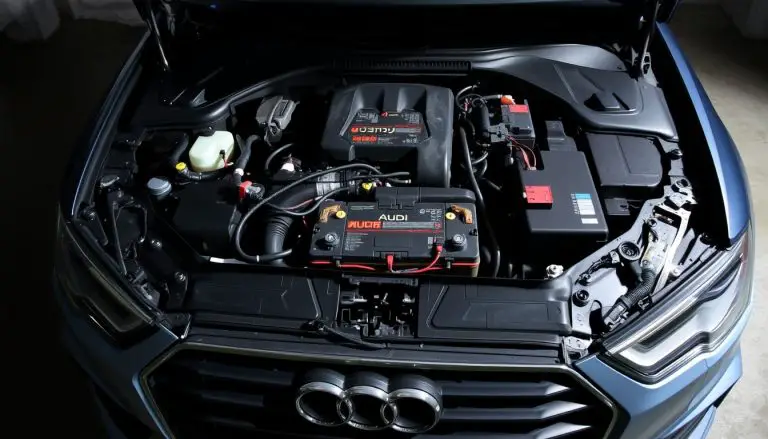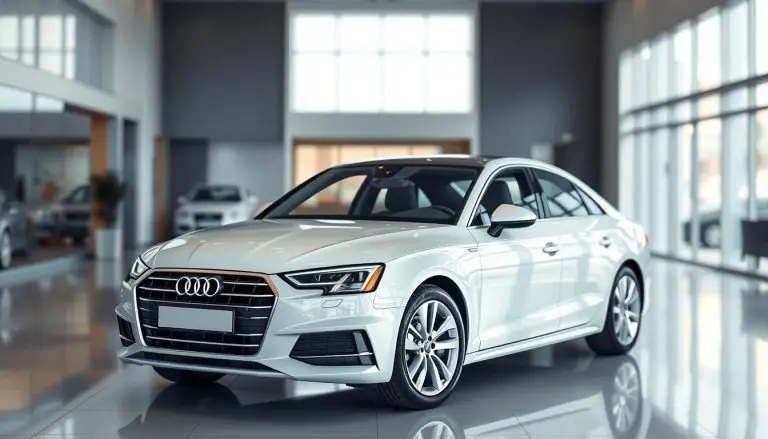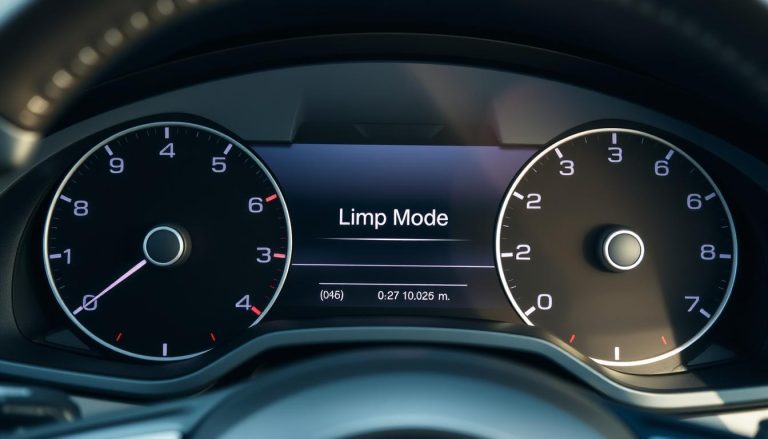This troubleshooting guide explains why connection problems appear in everyday use and what you can do first to restore audio and phone pairing.
You’ll learn how the phone first pairs via Bluetooth and then hands off to a Wi‑Fi network for high‑bandwidth features. That transition is a common point where connectivity fails.
The MMI infotainment system, wireless protocols, and your device settings all interact. We show simple, reversible steps you can try in minutes before visiting a dealer or replacing hardware.
Common root causes include competing home or work Wi‑Fi networks, wrong SSID selection in the car, and outdated device software. Following the right order—diagnose, confirm system support, then apply targeted steps—saves time.
Key Takeaways
- Pairing often starts on the phone and finishes over Wi‑Fi; that handoff can break connectivity.
- Start with quick, reversible steps: restart the phone, toggle wireless, and confirm MMI support.
- Interference from nearby networks or wrong SSID selection is a frequent root cause.
- Both iPhone and Android users get clear, device-specific steps to test and fix the problem.
- Reserve dealer visits for persistent failures or when an MMI update or hardware check is needed.
Quick Diagnosis: Common Audi Bluetooth Issues and What They Mean
Start by checking how your phone and the car hand off roles between Bluetooth discovery and the vehicle Wi‑Fi. This handoff is where many connection problems appear.
Symptoms to watch
Dropped connections, no audio, or CarPlay/Android Auto not launching are key red flags. If the phone pairs but media cuts out, the connection likely failed when Bluetooth should have handed credentials to the car’s Wi‑Fi.
How the handshake works
Phone pairing uses Bluetooth to exchange Wi‑Fi credentials, then the vehicle joins a Wi‑Fi SSID for high‑bandwidth features. The MMI exposes two SSIDs: a 2.4GHz labeled AUDI_XXXX and a 5GHz labeled AUDI_XXXX_5Ghz.
- Common cause: your phone stayed on a home or office network, so the car cannot find it over Wi‑Fi.
- Band switching: first pairing picks the 5GHz SSID for CarPlay; manually forcing 2.4GHz can destabilize the session.
- Quick fix: toggle the CarPlay option in the phone’s Bluetooth device settings, then reselect CarPlay in the MMI.
Keep a short checklist: confirm the phone’s Wi‑Fi and bluetooth are active, verify the vehicle SSID is joined, and ensure the radio profile selects the right media route. These steps narrow down whether the issue is discovery, network join, or audio routing.
Audi Bluetooth Issues by System and Model: MMI, CarPlay, Android Auto, and Compatibility
Check your car’s infotainment generation first. That single fact tells you whether wireless Apple CarPlay or wireless Android Auto is possible, or if a USB cable is required.

MIB2, MIB2+, and MIB3 explained
MIB2 – Most earlier models support wired integration only. Expect USB for CarPlay and android auto connections.
MIB2+ – Adds wireless Apple CarPlay on many 2019–2021 models. This generation bridges wired and wireless capabilities.
MIB3 – Widens wireless support and performance across 2021–2022 lineups and is the platform that introduced broad wireless android auto in 2022.
Wireless availability by year and model
Wireless Apple CarPlay is common on 2019–2022 A, Q, and e-tron model families. Wireless android auto appears broadly on 2022 MIB3 vehicles, including Q4 e-tron and e-tron GT.
| MMI / Year | Wireless Apple CarPlay | Wireless Android Auto | Typical Requirement |
|---|---|---|---|
| MIB2 (2017–2020) | Mostly wired support | Wired only | USB cable required |
| MIB2+ (2019–2021) | Wireless on many A6/A7/A8/Q models and e-tron SUV / e-tron sportback | Mostly wired | Software version may enable wireless CarPlay |
| MIB3 (2021–2022) | Broad wireless Apple CarPlay across A3–A8, Q4, Q5–Q8, e-tron family | Wireless available (2022 models) | Preferred for wireless carplay android auto |
| e-tron models | Varies by trim year; e-tron sportback often listed for wireless from 2020–2022 | 2022 MIB3 vehicles support wireless android auto | Confirm MMI and software version |
Why Wi‑Fi bands and audi connect matter
Apple CarPlay prefers the 5GHz SSID (AUDI_XXXX_5Ghz). That band offers higher throughput and more stable media streaming.
Do not force your phone onto the 2.4GHz AUDI_XXXX SSID during pairing. Manual band switching can cause the connection to drop and trigger repeated re-pair attempts.
- Keep the phone off expired audi connect hotspots so CarPlay or android auto remains prioritized.
- Verify the car’s software and MMI version if wireless features are missing; service updates can change availability.
- For e-tron sportback owners, confirm model-year support to avoid misdiagnosing a capability gap as a fault.
Step-by-Step Fixes: Connectivity, Network Settings, and MMI Pairing Resets
Follow a short, logical checklist to resolve pairing failures quickly. Start with the least invasive steps first so you can restore the feature without a service visit.

Stop band switching
Forget the 2.4GHz vehicle SSID on your phone. Let the car steer the first-time join to the 5GHz SSID (AUDI_XXXX_5Ghz) that CarPlay expects for stable media streaming.
Cycle CarPlay in iPhone settings
Open Bluetooth on the phone, tap the MMI entry, use the (i) details to toggle the CarPlay option off and on, then reselect CarPlay in the car. This often restores the connection without deeper changes.
Reset network settings when needed
If sessions still drop, go to Settings > General > Reset > Reset Network Settings. This clears Wi‑Fi, cellular, and VPN/APN entries and removes hidden conflicts that can block a stable network handshake.
Delete and re-pair
Remove the vehicle Wi‑Fi profile and delete saved pairings on both the phone and the car. Pair Bluetooth first, accept prompts for wireless CarPlay or carplay android auto, and allow the two devices to complete the handshake.
- Do not try use the vehicle hotspot for internet if Audi Connect Plus has expired; enable Wi‑Fi Assist so the phone falls back to cellular for data.
- Unlock the phone and permit USB Accessories so the MMI can access the device when connecting over USB or starting a wireless session.
- Update the phone to the latest iOS and disable music EQ profiles if audio stutters. EQ and outdated software can cause odd behavior.
- Android users: confirm your car runs MIB3 before expecting wireless Android Auto; use USB if the model-year list shows wired only.
After these steps, test in a neutral location away from congested networks and allow a minute for the phone and car to negotiate the renewed connection path.
Conclusion
, Most connectivity problems clear up when you follow the diagnostic flow and the short fixes above. Start by checking phone and car network settings, then re-pair profiles and confirm the device software version.
Final checklist: verify the network join, keep the vehicle SSID off the phone for data, review radio source and turn off EQ if audio sounds odd. Owners of e-tron sportback with MIB3 often get stable wireless after a fresh cycle.
If trouble returns after these steps, document timing and messages, then contact a dealer for service or a module inspection. Thanks for reading — bookmark related posts for updates and return if you need more troubleshooting help.
FAQ
What are the most common symptoms when my Audi loses connection or CarPlay/Android Auto won’t start?
You may see dropped audio, intermittent voice calls, no media playback, or the CarPlay/Android Auto interface failing to launch. Symptoms can include the phone showing connected but the radio won’t switch to the phone source, or the MMI cycling between profiles. These signs point to either pairing, Wi‑Fi band switching, or software compatibility problems.
How do Bluetooth, Wi‑Fi, and the MMI interact during pairing and wireless sessions?
The MMI coordinates Bluetooth for phone controls and Wi‑Fi for wireless CarPlay/Android Auto data. Bluetooth handles call and profile negotiation while the phone and head unit establish a Wi‑Fi direct link for media and screen streaming. If one link fails, the session often breaks even if the other appears connected.
Which MMI generations support wired versus wireless CarPlay and Android Auto?
MIB2, MIB2+, and MIB3 differ by model year and trim. MIB2 commonly supports wired CarPlay/Android Auto. MIB2+ introduced expanded features; some later cars added wireless CarPlay. MIB3 (newer units) added broader wireless Android Auto and wireless CarPlay support on specific models and model years.
Which Audi models and years typically offer wireless Apple CarPlay?
Wireless Apple CarPlay is commonly available on select 2019–2022 A6, A7, A8, Q models, and many vehicles in the e‑tron lineup. Availability depends on the MMI software version and factory options, so verify your vehicle’s equipment and software level.
Which models support wireless Android Auto?
Wireless Android Auto began appearing on 2022 MIB3 models, including the Q4 e‑tron and e‑tron GT. For older models, Android Auto usually requires a wired USB connection or aftermarket solutions.
Does the Wi‑Fi band affect CarPlay stability, and how do AUDI_XXXX vs AUDI_XXXX_5Ghz networks behave?
Yes. The 2.4GHz AUDI_XXXX network has broader range but more interference; the 5GHz AUDI_XXXX_5Ghz offers higher throughput and lower interference but shorter range. Phones sometimes switch bands mid‑session, which can drop a CarPlay link. Locking the phone to a single band or preventing manual hotspot connections helps stability.
How can I stop band switching and keep a stable wireless connection?
Avoid manually connecting your phone to the vehicle hotspot on a different band. Disable automatic Wi‑Fi switching on the phone, turn off other nearby vehicle hotspots, and prefer the 5GHz network if the head unit and phone support it. Also keep the phone within the cabin’s central area to reduce signal loss.
What does “cycle CarPlay” in iPhone Bluetooth settings mean and how do I do it?
Cycling CarPlay means turning off the MMI pairing entry on the iPhone, then reselecting it. Go to Settings > Bluetooth, find the vehicle entry, tap it, choose Forget This Device, then reconnect through the car’s MMI pairing menu. This forces a fresh session and can clear lingering configuration conflicts.
When should I reset network settings on my iPhone, and what does that do?
Reset network settings is useful when Wi‑Fi and Bluetooth connections won’t stabilize after re‑pairing. It clears saved Wi‑Fi networks, Bluetooth pairings, and cellular settings, which often removes corrupted entries blocking MMI connections. Back up any important Wi‑Fi passwords first.
How do I fully delete and re‑pair connections on both the phone and the MMI?
On the phone, forget the vehicle’s Bluetooth and Wi‑Fi entries. In the MMI, delete the paired device(s) and clear stored Wi‑Fi profiles. Then reboot both the phone and the car’s head unit (power cycle or perform a soft reset) and follow the manufacturer pairing steps to establish a fresh connection.
Should I use the vehicle hotspot for data during CarPlay sessions?
Avoid using the vehicle hotspot for data unless you have Audi Connect Plus or a confirmed data plan in the car. Using the vehicle hotspot without appropriate configuration can cause the phone to switch networks mid‑stream, breaking CarPlay or Android Auto. Prefer the phone’s cellular data or a stable Wi‑Fi network.
What is Wi‑Fi Assist and why should I turn it on?
Wi‑Fi Assist lets the phone switch to cellular data when Wi‑Fi quality is poor. Enabling it prevents stalls when the MMI or in‑car Wi‑Fi drops, keeping streaming services and navigation responsive. Note this may use cellular data if Wi‑Fi weakens.
Why must I unlock my iPhone and allow USB Accessories for MMI to access it over USB?
iOS restricts USB data access when the phone is locked to protect privacy. Unlock your phone and enable USB Accessories in Settings if prompted so the MMI can establish a wired CarPlay session. Without this, the head unit may charge the phone but won’t complete the CarPlay handshake.
Could an iOS update or EQ profile cause odd audio behavior with the car system?
Yes. New iOS releases can change how audio codecs or hands‑free profiles behave. EQ or audio enhancements on the phone can also alter levels or distort sound. Update to the latest iOS, disable phone EQ or sound‑processing profiles for testing, and retest the car audio.
Are there special considerations for Android Auto and MIB3 compatibility?
Confirm your head unit is MIB3 and that the vehicle supports wireless Android Auto. Some phones require the Android Auto app or specific OS versions. If listed as supported, prefer wireless in MIB3 models; otherwise, use a high‑quality USB cable and ensure the phone’s USB mode allows data transfer.
What quick steps should I try before visiting the dealer for persistent connectivity problems?
Reboot the phone and head unit, forget and re‑pair device entries, reset network settings on the phone, update the phone OS, and ensure the MMI software is current. Also test with a different phone or cable to isolate whether the problem is the car or the device.
When is a dealer visit or software update necessary?
If problems persist after resets, multiple phones fail to connect, or the MMI shows repeated faults, schedule dealer service. They can update MMI software, check module versions, and apply manufacturer fixes. Record error messages, software versions, and test times to speed diagnosis.


